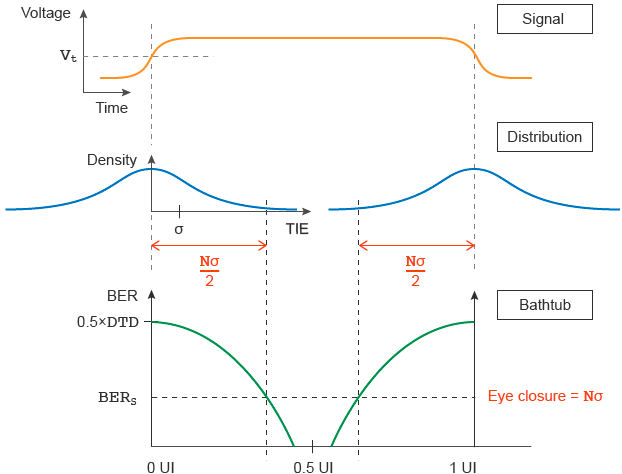RMS to Eye-closure Jitter Calculator | Back to Development Calculators
Assuming only random noise, you've quantified the time-interval error (TIE) jitter in a signal as an RMS value. You want to determine, if a bit-error ratio (BER) bathtub plot were to be measured for this signal, what the plot's eye closure is at a specified BER (that is, BERS).
Note that TIE is the short-term variation of a digital signal's significant instants from their ideal positions in time, where a "significant instant" refers to the time a rising or falling edge crosses a threshold voltage (Vt).
The figure below illustrates one unit interval (UI), which is the duration of one bit in a data signal. The location of each edge in the signal is randomly distributed with a standard deviation of σ. Note that since the distribution's mean is zero, its RMS value equals σ.

The eye closure is computed as Nσ, where N is a crest factor determining how much of the distribution's tail needs to be included for the BER to equal BERS. The calculator computes this eye closure after solving the following equation for N,
where DTD is the signal's data-transition density. For data signals, DTD is defined as the ratio of transitions (or, edges) to the number of bits. For clock signals, set DTD=1.
Enter numbers below using integers or scientific notation (for example, enter 123 as 123, 1.23e2, or 1.23E2).
RMS to Eye-closure Calculator
The following table is provided for quick reference.
